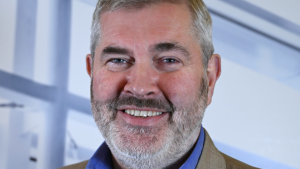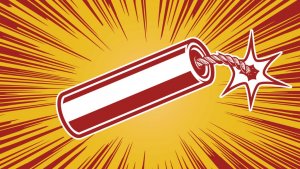From MVP to MLP: Make Your Product Lovable
How do you take something people will buy and turn it into something they will love?

In the past five years, ‘Minimum Viable Product’ or MVP has gone from being one of the most common acronyms in sport (‘Most Valuable Player’) to one of the most common terms in tech startups. And now it’s also one of the most contentious.
What is a Minimum Viable Product? Is it the right approach? The Internets are full of arguments pro and con. But perhaps the most question is, how do you make the right first release of your product?
According to Eric Ries (author of The Lean Startup), a Minimum Viable Product is “[the] version of a new product which allows a team to collect the maximum amount of validated learning about customers with the least effort.”
That sounds pretty straightforward, but it’s about more than prioritising (or dropping) features against a tight timescale and tighter budget. The truth is, a product isn’t really viable until it’s loved.
A successful MVP is one that not only conveys what the product does to its intended audience, but does so in a way that makes that audience want to engage with it, use it, give feedback on it, rate it, and so on.
Otherwise, where will that ‘learning’ come from? You’ve got to make something people will love, at least a little: a Minimum Lovable Product. I’ve spent considerable time helping clients take their ideas from MVP to MLP. Here are a few tips to get you started:
1. Look around you
Of course you’ve thought about where your product sits against competitors, but have you thought about where it fits into your customer’s digital ecosystem? What other products and services are they likely to use, and how will those affect their expectations of yours?
What are their problems, and which of those are they likely to trust you to help with?
Taking time to consider these issues can help you identify branding or security challenges, integration points or partnerships that can help you stand out, or even streamline your feature set to eliminate overlap with a complementary product or service.
Finally, it will give you the basis for a realistic customer lifecycle that you can use for product planning.
2. Focus on outcomes
You might think it’s obvious, but which outcomes are you focussed on? If your first answer is revenue or downloads, think again. Of course we all need to meet commercial goals, but the simple fact of the matter is that people will download and/or pay for what makes them happy, what fulfils their needs.
So for each stage of your customer lifecycle, and for each customer type, you need to understand what drives them. What will they say when you’ve met their needs? How will they feel? What is the positive outcome for them?
These can then form the framework you use to prioritise features, technologies and ideas, based on whether they’re critical, supporting or exploratory.
3. You’re never done
Successful products keep evolving, adding new features or augmentations, partnering and integrating with complementary propositions, streamlining functionality to better map to actual customer behaviour. Add the fact that technology is changing all the time and it’s clear that no plan can be completely fixed.
Even if your MLP is wildly successful, don’t get too complacent. Drink up that champagne and then get back to work. One of those exploratory features you de-prioritised might be a game-changer for the sector; getting a reciprocal agreement with the hot new thing might be the ticket to long-term retention.
Most importantly, as your product evolves, keep listening to your customers. Try to understand not only what they’re doing, but why. People behave in unexpected ways but that’s not necessarily a bad thing — if you’re paying attention, it can lead you to whole new lands of opportunity.
Good luck and remember: putting people first is the key to sustainable commercial success.
Louisa Heinrich is founder of Super Human.
Thanks for signing up to Minutehack alerts.
Brilliant editorials heading your way soon.
Okay, Thanks!




